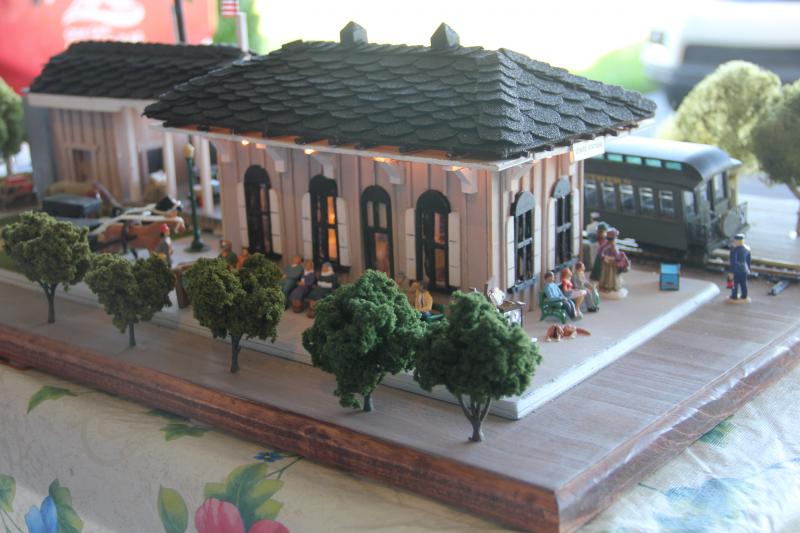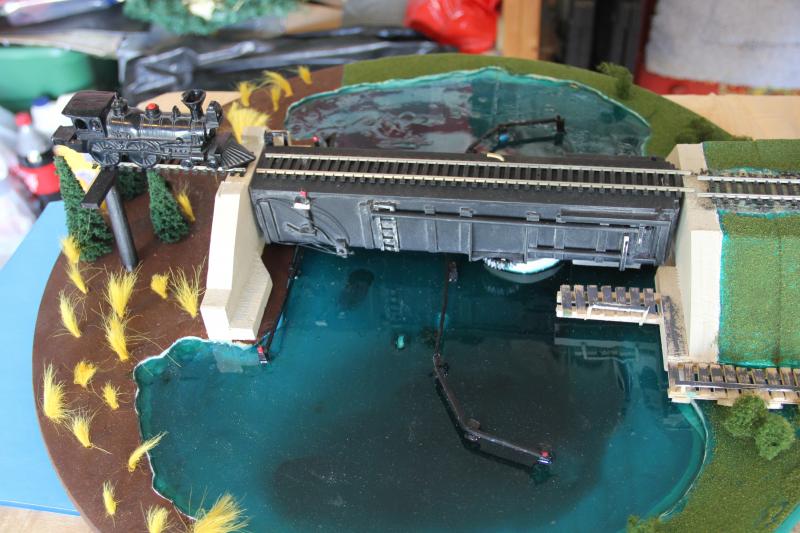Vision may be fading, but not Sharpie’s memories
It’s often the case. When one of our senses begins to fail, another becomes stronger and begins filling in the gaps.
For Dick Sharp, it’s vision and memory. In his 80s now, Sharpie - as he’s known to his friends - has lost the vision in one eye. He struggles with his other eye to make out shapes and faces and details. “I can’t drive anymore. That’s a real change, and not a good one.”
But he needs neither of those eyes to see clearly into his memory. And for Sharpie, his memories are a storehouse of images wrapped in positive emotions that he has tapped into patiently and persistently over the past few years.
Not one to sit and do nothing, Sharpie has taken up knife and wood strips, clay and wire and paint, to re-create in minute detail scenes from the mid-1940s when he was growing up in Lewes. “I’ve been focusing on historic scenes and buildings that in some cases are going away - scenes that only exist now in memories and photographs.”
In his garage in Vincent’s Overlook on Cave Neck Road, where he does much of his work, Sharpie has three different scenes he has completed of old Lewes. On one sheet of wood, he has re-created downtown Lewes and all of its businesses from about 1945.
“That was our time in Lewes growing up,” says his wife, Natalie Ingram, who helps him with the finer details of his creations.
“It was my playground,” says Sharpie, “and I loved it. Still do.”
Using old photographs acquired with the help of his friend Hazel Brittingham, Sharpie has constructed the buildings from that time - to scale - and arranged them along Second Street, Front Street and Third Street. The streets include electric wires and lights.
He points to a wood-framed building in the middle of Second Street. “There’s Wyatt’s Newsstand complete with the old gasoline pump in front.” His Lewes downtown includes the banks and hotels of the day, restaurants and a fish market, and St. Peter’s Episcopal Church. Along Front Street, his re-creation includes the Lewes-Rehoboth Canal, the cannons of the 1812 Park, the Cannonball House where a man named Frank once ran a restaurant famous for oyster stews in the winter, and the post office. The scene - which includes dozens of buildings - took several months to complete. Many of the buildings he constructed still exist, occupied now by different businesses and used for different purposes.
“It’s amazing to me what a man who is barely able to see was able to accomplish,” says Natalie.
On another board, using dimensions carefully calculated by a neighbor working from a photograph, Sharpie has brought back to life the Lewes passenger and train stations that once stood along Kings Highway. The scene is pre-1939, before the stations went the way of the railroads nudged out by increasingly improving highways. Natalie peopled the train station scene he created with figures she found on the internet. Outside, workers enliven the scene while inside, people stand at ticket counters and sit in the waiting area reading newspapers.
The railroad swing bridge over Lewes-Rehoboth Canal, now decommissioned, is the subject of another one of Sharpie’s scenes. “That will soon be gone,” he says, as he rotates the bridge open and closed. As he moves the bridge slowly, you can see him remembering trains crossing the bridge that young boys used to jump from in the summer.
Sharpie’s masterwork, though, stands inside the house in his office, surrounded by plaques and memorabilia from his years in the Coast Guard and involvement with Lewes Lions Club.
For a full year, he worked almost brick by brick, window by window, roof slate by roof slate, to build a scale model of the Zwaanendael Museum constructed by the state in 1931 to commemorate the 300th anniversary of the founding of Lewes. Sharpie used thin copper strips for authenticity, detailed the musuem’s countless little window panes, while Natalie shaped and baked clay into the decorative figures - including David de Vries on the peak - that adorn the front of the museum.
As with his other scenes, Sharpie researched the building extensively, and in the case of the Zwaanendael was able to get copies of the blueprints from the state’s archives in Dover so he could accurately build his miniature version.
“It’s all taken a lot of time, but at this point in my life I have a lot of time, and I can’t sit still. It gives me something to do.” In the process, too, Sharpie looks inward, and brings to life the many wonderful memories that each little detail coaxes from the depths of his mind.


























































